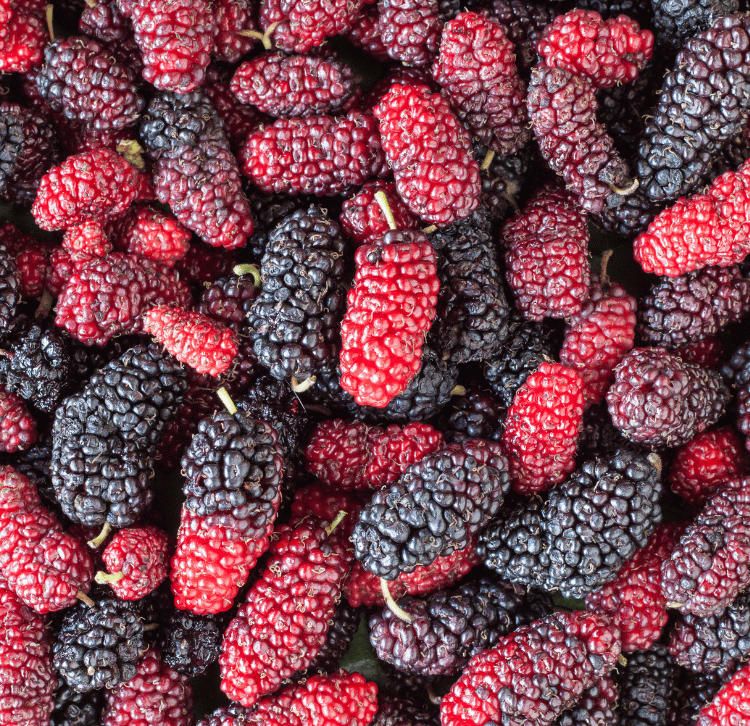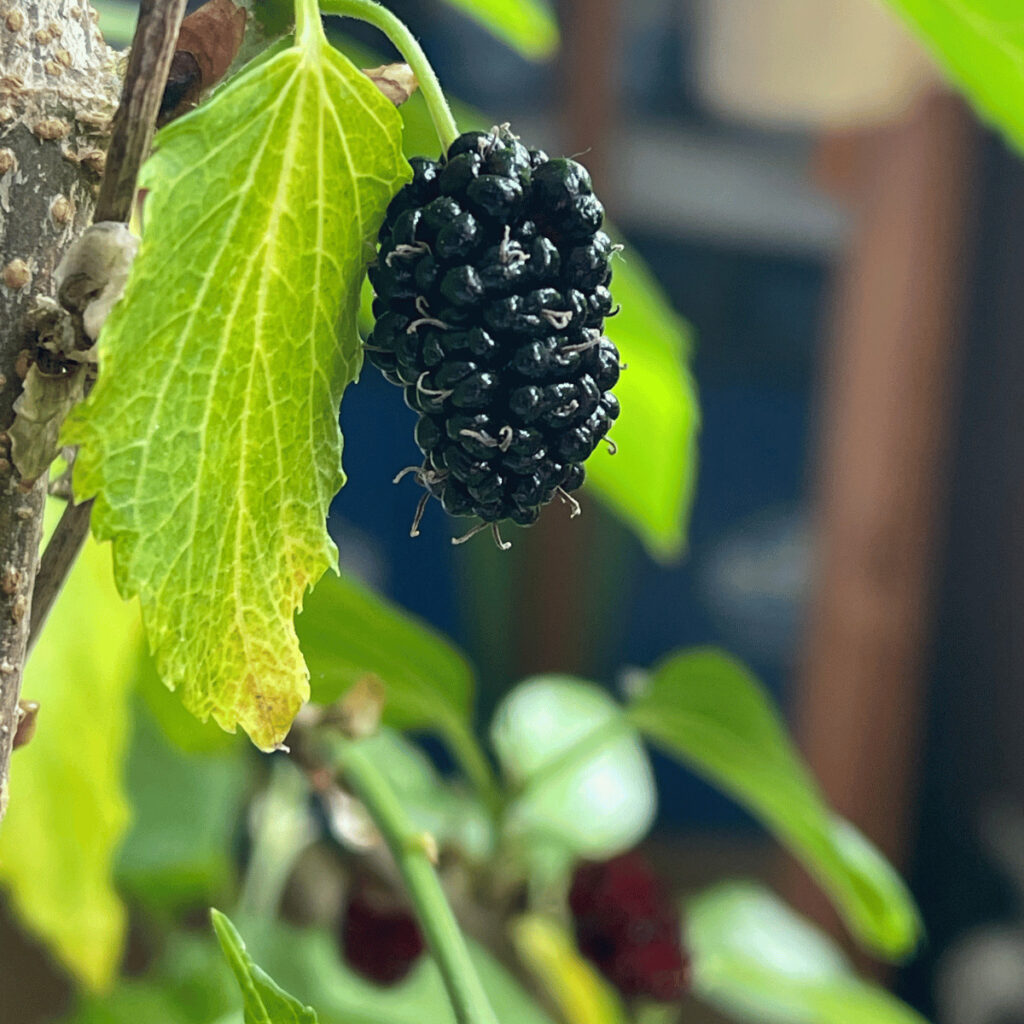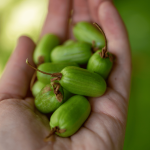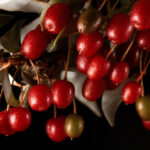Plant Profile: Mulberry – The Versatile Tree for Every Sustainable Garden

Discover the remarkable Mulberry tree, a genus known scientifically as Morus. This profile explores the rich history and diverse uses of the white, red, and black varieties of this tree, each bringing unique benefits to your garden.
Classification
- Kingdom: Plantae
- Class: Magnoliopsida
- Order: Rosales
- Family: Moraceae
- Genus: Morus
Varieties and Distinctions
Dive into the world of mulberries by exploring the characteristics of its popular varieties:
White Mulberry (Morus alba)
- Origin: Eastern and central China
- Identification: Lobed, bright green leaves with white to pale yellow fruits
- Uses: Preferred food source for silkworms, aiding in sericulture
Red Mulberry (Morus rubra)
- Origin: Eastern and central United States
- Identification: Rough, textured leaves with deep red to purple fruits
- Uses: The fruits are a delicious addition to jams, jellies, and wines
Black Mulberry (Morus nigra)
- Origin: Western Asia
- Identification: Large, heart-shaped leaves with black, sweet fruits
- Uses: Apart from culinary delights, it offers ornamental value
Growth Habits and Requirements
- USDA Hardiness Zones: 4-8 (white and red), 6-10 (black)
- Chill Hours: 400-800 hours
- Height: Varies between 6-18 meters (20-60 feet) depending on the variety
- Preferred Conditions: Full sun to partial shade with well-drained soil
Role in a Food Forest
Mulberry trees predominantly occupy the canopy layer, offering shade and habitat for other plants and wildlife.
Benefits for Hugelkultur or Permaculture Systems
Mulberry trees are a remarkable addition to hugelkultur and permaculture systems, bringing a host of benefits that enhance the sustainability and productivity of gardens and farms.
Soil Health and Water Conservation
The deep root system of mulberry trees plays a pivotal role in maintaining soil health. It aids in preventing soil erosion, a common challenge in agricultural landscapes. Moreover, the roots help in water conservation, drawing moisture from deep within the soil and reducing the need for frequent watering, a principle that is central to permaculture practices.
Mulch and Organic Matter
Mulberry leaves can be utilized as a nutrient-rich mulch, decomposing to add vital organic matter to the soil, thereby enhancing its fertility. This process fosters a healthy soil microbiome, encouraging the proliferation of beneficial microorganisms that aid in nutrient cycling and improving soil structure.
Symbiotic Soil Relationships
While not a nitrogen-fixing species themselves, mulberry trees can form associations with nitrogen-fixing bacteria in the soil. This symbiotic relationship can enhance soil nitrogen levels, promoting healthy growth in surrounding plants and reducing the need for synthetic fertilizers.
Polyculture and Biodiversity
In permaculture systems, mulberry trees can be a part of polyculture plantings, where they coexist with various other plant species, creating a rich, biodiverse ecosystem. This approach not only fosters a habitat for a wide range of fauna but also promotes plant health through natural pest control mechanisms.
Agroforestry and Economic Benefits
In agroforestry systems, mulberry trees can be integrated with other agricultural practices, offering economic benefits. The trees provide timber and fodder, alongside the delicious mulberry fruits, creating a multifunctional system that yields a range of products.
By incorporating mulberry trees into hugelkultur and permaculture systems, gardeners and farmers can foster landscapes that are not only productive but also resilient and self-sustaining, working in harmony with nature to create a vibrant and healthy ecosystem.
Culinary and Medicinal Uses
While the berries are a culinary delight, it is essential to consult a healthcare provider for guidance on medicinal uses.
Cultural Significance
Chinese Legend and the Discovery of Silk
In Chinese history, the mulberry tree holds a significant place due to its role in the discovery of silk. According to legend, the empress Leizu, wife of the Yellow Emperor, discovered silk while having tea under a mulberry tree. A cocoon fell into her tea, and as she pulled it out, she discovered a thread which could be unwound. This led to the cultivation of silkworms, a practice known as sericulture, and the development of the silk loom. The mulberry tree, therefore, stands as a symbol of Chinese ingenuity and the luxurious fabric that made China famous globally.
Biblical References
Within biblical texts, the mulberry tree emerges in various narratives, symbolizing wisdom and discernment. In the book of 2 Samuel (5:23-24), David receives a divine strategy for battle; he is instructed to wait until he hears the sound of marching in the tops of the mulberry trees before launching an attack on the Philistines, a sign of God moving ahead of him. This narrative paints the mulberry tree as a beacon of guidance and divine intervention.
In the New Testament, the tree takes on a different role. Luke (17:6) recounts Jesus using it in a parable to illustrate faith. He speaks of the potential of a small amount of faith, likening it to a mustard seed that can uproot a mulberry tree and plant it in the sea, a vivid imagery to depict the power of faith to overcome seemingly insurmountable challenges.
Greek Mythology
In Greek mythology, the mulberry tree is associated with the tragic story of Pyramus and Thisbe, a tale of forbidden love. The fruits of the mulberry tree were said to have turned from white to red because of their tragic death, which is a vivid imagery used to explain the color of the mulberry fruits.
Japanese Culture
In Japan, the mulberry tree is used in the production of Washi, a type of paper used traditionally for art and writing. The fibers of the mulberry tree are long and strong, making them ideal for paper production.
A Personal Journey with Mulberries
In the midst of the rich historical and cultural tapestry surrounding the mulberry tree, I find a thread of my own story weaving into it. The first time I came across a mention of mulberries was in the biblical texts, a distant concept, a fruit I had never seen, let alone tasted. Fast forward to this spring, a surprising yet delightful event unfolded right in my living room.
As a novice to the world of mulberries, I had embarked on a journey to grow a red mulberry tree indoors. Before I could even transplant them, the little tree surprised me, sprouting and blossoming with life, bearing fruit in the very space where I live and breathe daily. It was a moment of awe and wonder, holding a ripe mulberry in my hand, a fruit nurtured to life in the cozy corners of my home, far away from its native lands.

Pictured above is a ripe mulberry harvested from my very own red mulberry tree, nurtured indoors in my living room here in Norway. While one might expect a red mulberry to bear red fruits, it’s fascinating to note that the color can range from a deep red to almost black, showcasing the rich diversity and surprising nature of this wonderful tree.
Tasting a mulberry for the first time, a rush of flavors burst forth, a sweet testimony to the tree’s rich heritage and a personal victory in my gardening journey. It was a tangible connection to the myriad stories and legends that surround this remarkable tree, a personal chapter added to the age-old narrative of the mulberry tree, right here in my living room, in Norway, a place where mulberries are seldom seen, let alone grown.
This personal encounter with the mulberry tree has not just been a delightful surprise but a deep connection forged with a tree steeped in history and legend, a tree that now holds a special place in my heart and home.
Propagation and Care
Propagate through seeds, cuttings, or grafting, and enjoy a tree that requires minimal care once established.
Pests and Diseases
Be wary of pests like fruit flies and diseases such as root rot, and manage them through integrated pest management strategies.
Harvesting and Storage
Harvest the ripe berries in late spring to early summer and store them in a refrigerator or freeze for longer shelf life.
Plant’s Lifespan
A perennial giant, the mulberry tree can grace your garden for several decades, even reaching a hundred years or more.
Warnings or Cautions
While the tree is a delight, be cautious of the staining properties of the berries and potential allergic reactions.
Environmental Impact
Despite not being officially listed as invasive, the mulberry tree can exhibit invasive tendencies in certain localities. It is advised to consult local environmental agencies for region-specific information.
Wildlife Attraction
Birds
Attracting species like robins and starlings, the tree offers a rich source of nutrition through its berries.
Mammals
Small mammals find both food and shelter in the mulberry tree, enhancing the garden’s biodiversity.
Insects and Butterflies
From being a host plant for butterflies to attracting pollinators like bees, the tree supports a vibrant ecosystem.
Beneficial Predators
Encourage a population of beneficial predators such as ladybugs, which help control pest populations.
Amphibians
Near water bodies, the tree can attract amphibians, adding to the rich biodiversity it supports.
Companion Planting
Pair the mulberry tree with understory shrubs and ground covers that enjoy partial shade for a harmonious garden ecosystem.
Fun Facts
Did you know black mulberries are considered the tastiest among the mulberry species?
Dive Deeper: A Personal Journey with Red Mulberries
If you found the journey of the mulberry tree fascinating, you would certainly enjoy a deeper exploration into the world of red mulberries in Scandinavian climates. In “Branching Out: A Journey with Red Mulberry Trees in Scandinavian Climates,” I share my personal experiences and the rich learnings acquired while nurturing these remarkable trees in a region where they are seldom grown. From understanding the right growing conditions to witnessing the first sprout, it’s a tale of patience, learning, and the joy of gardening. Embark on this enriching journey to gain a more profound understanding of the red mulberry’s adaptability and the delightful surprises it holds for garden enthusiasts.




